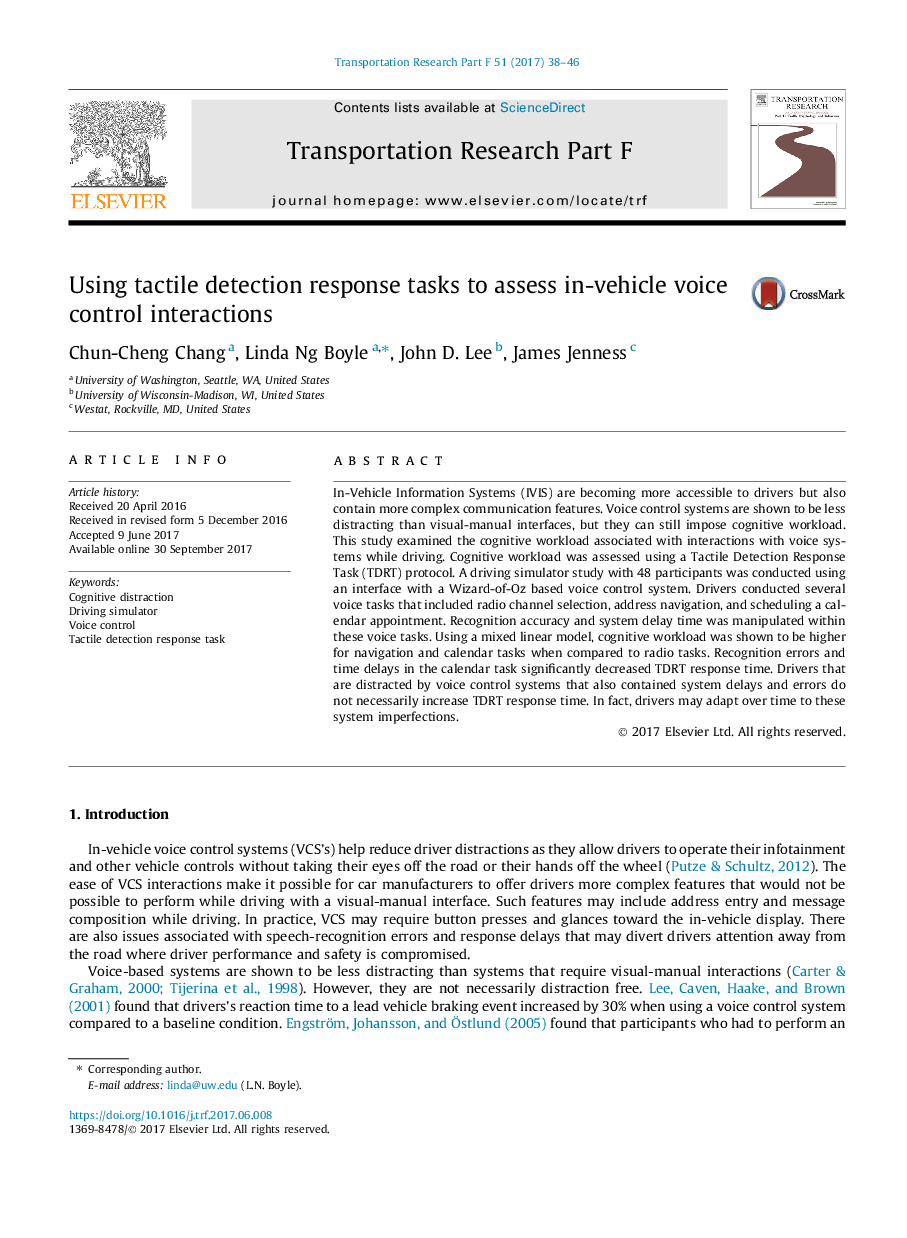| کد مقاله | کد نشریه | سال انتشار | مقاله انگلیسی | نسخه تمام متن |
|---|---|---|---|---|
| 5037254 | 1472435 | 2017 | 9 صفحه PDF | دانلود رایگان |
- Tested cognitive load of voice systems with tactile detection response task (TDRT).
- Subjects recalled information from calendar entry, navigation, and radio tuning tasks.
- Calendar task with no time delays and no errors had the highest TDRT response times.
- Cognitive workload was impacted by amount of information needed for memory recall.
In-Vehicle Information Systems (IVIS) are becoming more accessible to drivers but also contain more complex communication features. Voice control systems are shown to be less distracting than visual-manual interfaces, but they can still impose cognitive workload. This study examined the cognitive workload associated with interactions with voice systems while driving. Cognitive workload was assessed using a Tactile Detection Response Task (TDRT) protocol. A driving simulator study with 48 participants was conducted using an interface with a Wizard-of-Oz based voice control system. Drivers conducted several voice tasks that included radio channel selection, address navigation, and scheduling a calendar appointment. Recognition accuracy and system delay time was manipulated within these voice tasks. Using a mixed linear model, cognitive workload was shown to be higher for navigation and calendar tasks when compared to radio tasks. Recognition errors and time delays in the calendar task significantly decreased TDRT response time. Drivers that are distracted by voice control systems that also contained system delays and errors do not necessarily increase TDRT response time. In fact, drivers may adapt over time to these system imperfections.
Journal: Transportation Research Part F: Traffic Psychology and Behaviour - Volume 51, November 2017, Pages 38-46
